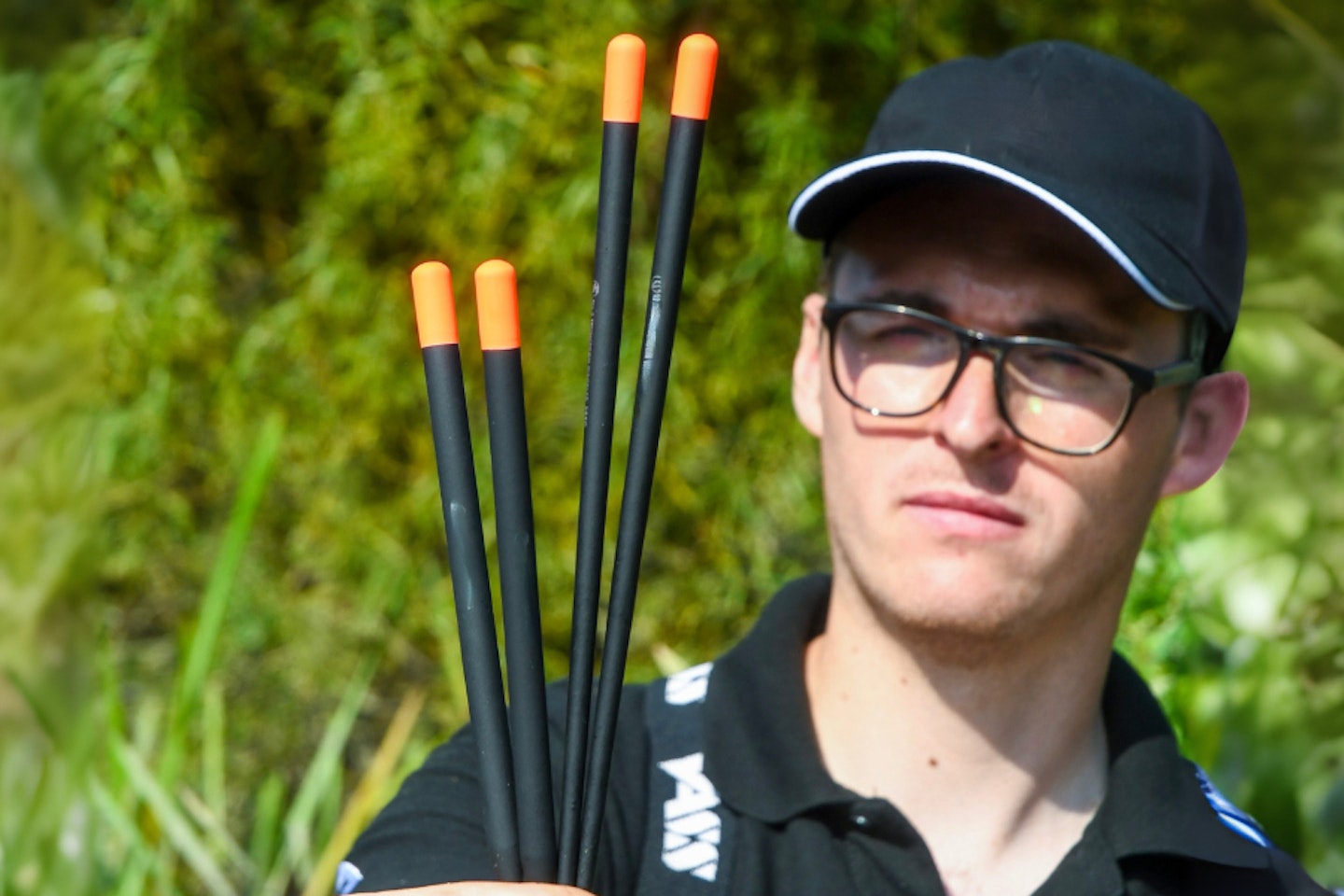Visit any stretch of river where big fish such as barbel are the primary target, and you’ll instantly notice that most anglers have their rods on a pod, pointing skywards.
Using the feeder to target their quarry, there’s no doubt that such methods are incredibly effective when deployed properly – but there are other ways that are arguably more exciting.
The waggler is a tactic that many have abandoned, but those that still know how exhilarating big-fish action can be stick with it.
Maver-backed angler Matt Powell always keeps an open mind when he arrives at a river swim, and has lost count of the times he has concluded that the waggler is the best approach to unlock the true potential of the area.
The first instinct of most people targeting chub and barbel is to chuck out a feeder and wait for the rod-tip to hoop over. It’s unlikely you are going to have the luxury of having dozens of big fish in front of you at any one time, so it’s important that you search the peg to locate their exact whereabouts.
That is what the waggler does excellently, keeping you in the hunt for bites all day as the fish duck and dive around your swim.
THE BEST SPECIMEN FISHING RODS ARE GREAT FOR CATCHING CHUB AND BARBEL.
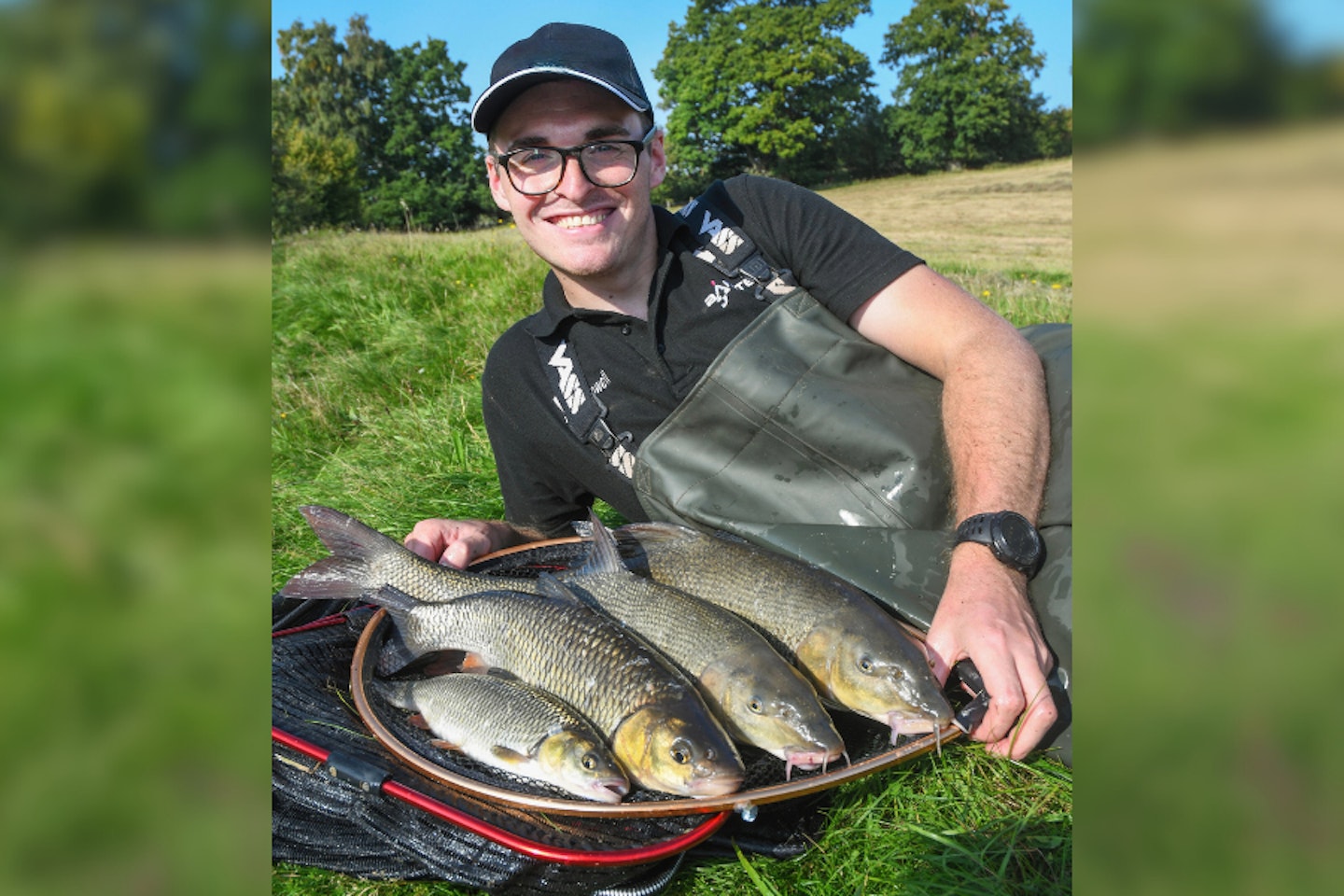
Search the entire swim
When approaching a river with chub or barbel in mind, many anglers are drawn towards far-bank snags or overhanging trees. But often there’s more action to be had in the open water, away from obvious features. Loosefeed travels freely in the central current, creating a natural conveyor belt that encourages fish to leave their hideouts.
By allowing your float to run through the swim on each cast, you can quickly locate where chub and barbel are holding, rather than limiting yourself to a single spot the way you would with a stationary feeder.
If you get a bite, slow the float down a fraction when it reaches that same point next time, as there are likely to be more lingering nearby. Once that run of action dries up, simply repeat the process and try to find the next group of fish.
Being proactive and searching will put you on to the fish much faster than a passive bait-and-wait approach.
IF YOU HAVE NEVER CAUGHT A BARBEL ON THE FLOAT, HERE IS SOME GREAT ADVICE TO HELP.
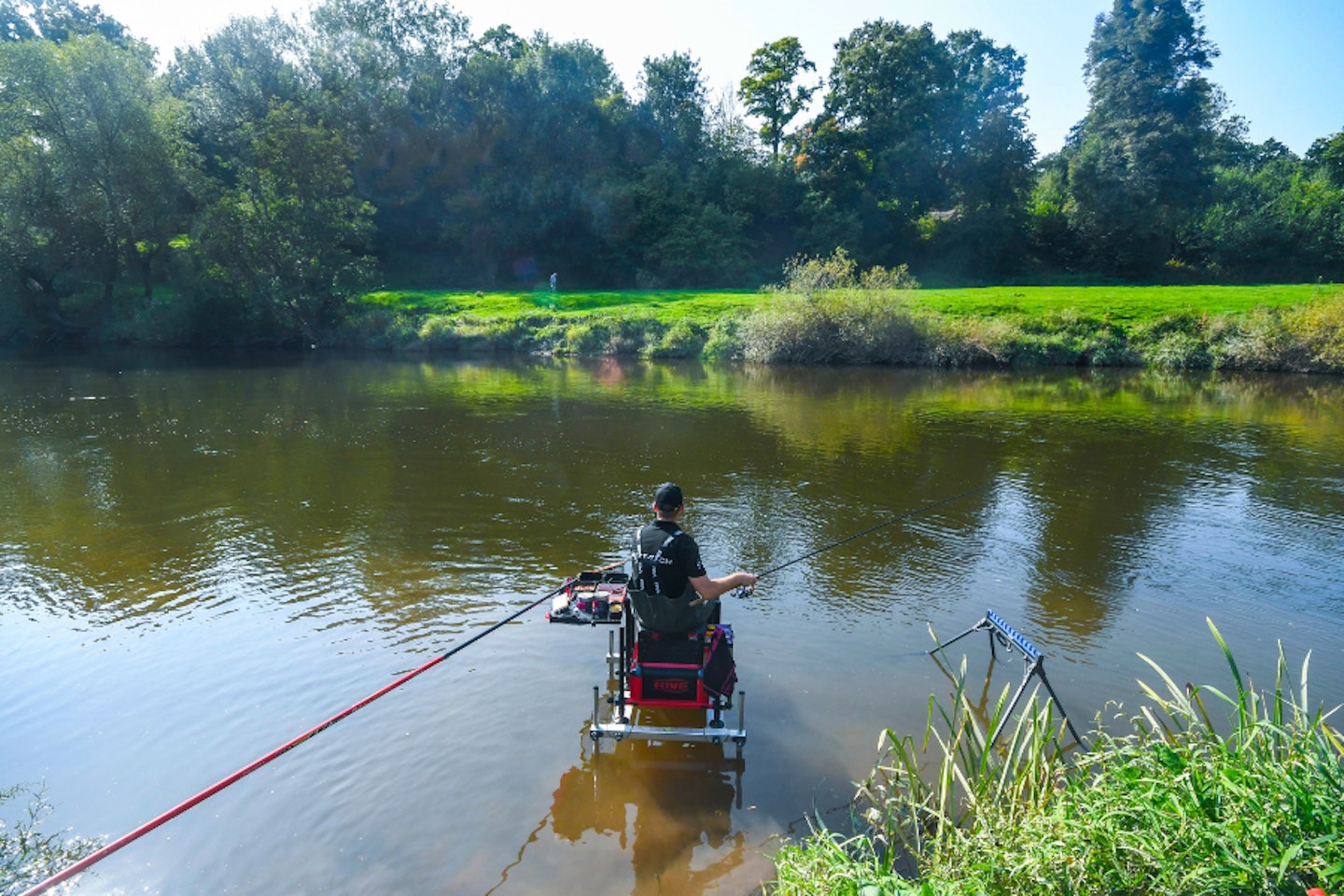
Land every fish
Selecting the right tackle can make all the difference in effectively fishing a river for powerful species. A 14ft rod with a bit of backbone provides the necessary length for smooth line management, helping you keep control of the rig throughout the whole run.
Pair the rod with a 3000 or 4000 sized reel spooled up with a durable 5lb mono, using a 12ins hooklength of 0.16mm or 0.18mm to a strong size 14 or 16 hook.
This set-up gives you maximum control, whether you need to slow or speed up your presentation. This will ensure you’re prepared for any change in conditions throughout the day.
CHECK OUT OUR PICK OF THE BEST FISHING REELS IN THIS BUYERS GUIDE.
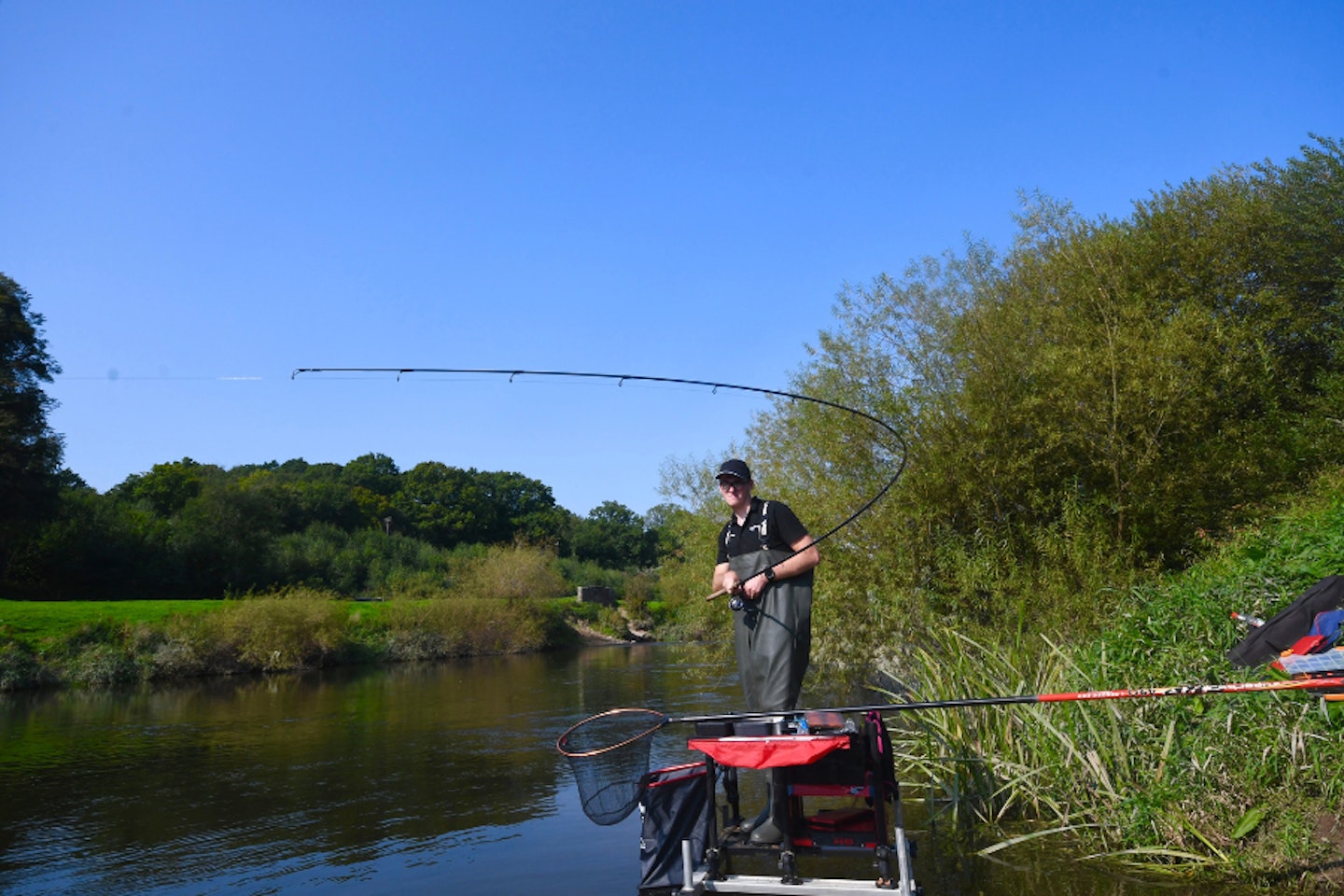
Priming the swim
Hemp and casters play a huge part in my attack, and are fed frequently via a catapult. Hemp is reasonably heavy, and will sink to the bottom and build a carpet for the fish to graze over, while casters will flow through the swim and make sure food is always dropping through the water column to entice a reaction from nearby chub, barbel and even big perch.
Because I want the fish to stay in my swim and not drift out of range, I use a 75:25 ratio in favour of hemp.
Make sure you feed each time you run the rig through, varying the amount that goes in. If you sense there are very few fish in front of you, then up the quantity that each pouch delivers to try and draw a shoal in, whereas you should back off it when there are plenty in front of you.
Double white maggot is a durable hookbait that will stand out well, especially in clear water conditions, although putting a bigger bunch on the hook may be needed if small fish prove problematic.
IMPROVE YOUR RIVER FISHING WITH THIS HANDY GUIDE...
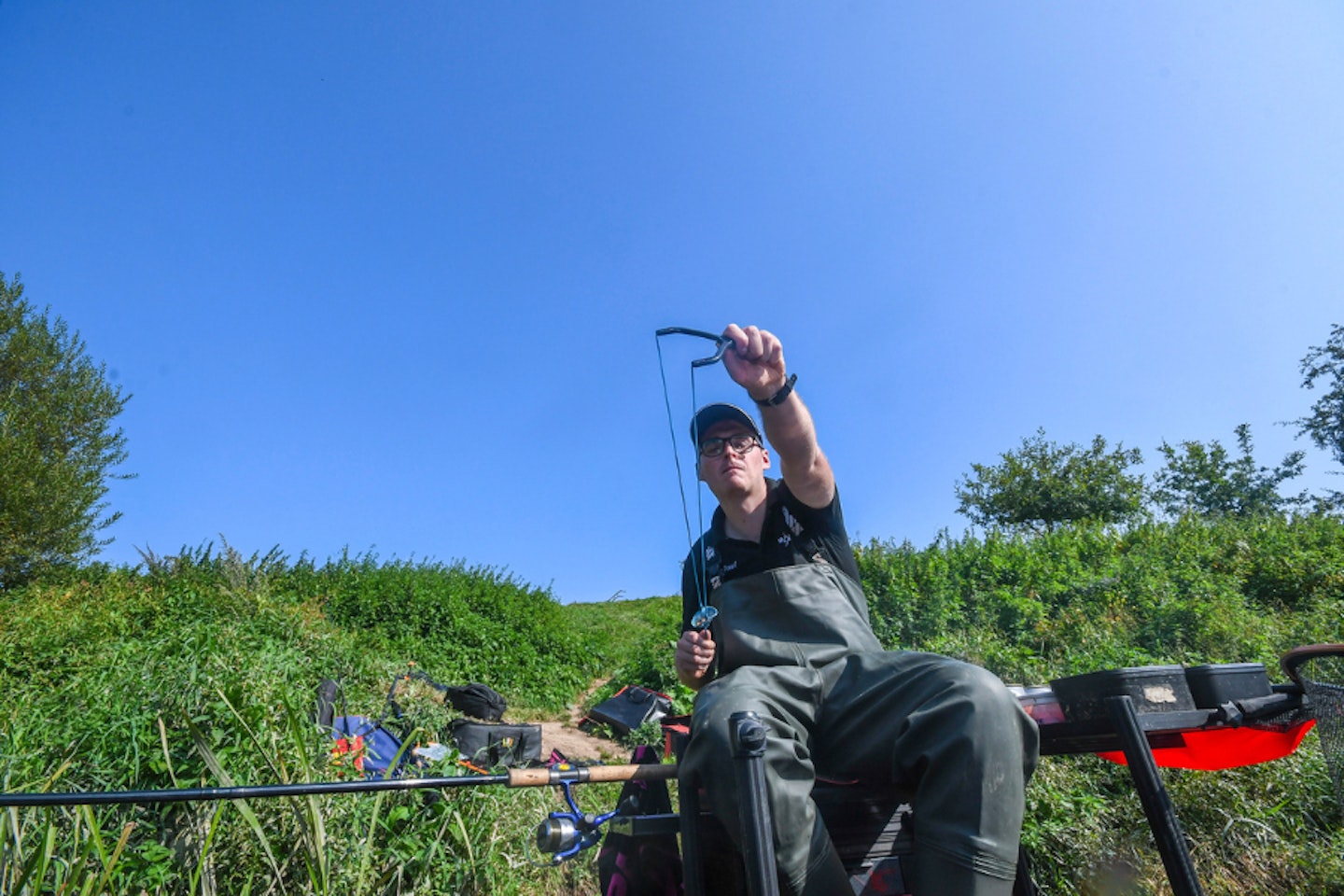
Keep in contact with the rig
You won’t always get bites close to where the float enters the water. I’ve had plenty of sessions in the past when the float buries most frequently after it has run 20m-30m down the current.
Hitting bites when there is that much line off the spool can prove tricky, but maintaining a tight line will stack the odds firmly in your favour.
Make sure you are regularly mending the rig and giving the float a quick twitch, to guarantee that the slightest flick of the rod-tip will connect with the fish.
Achieve this, strike firmly when you get a bite, and you’ll be guaranteed a solid conversion rate.
THE BEST BARBEL FISHING RODS ARE BUILT TO TACKLE THESE HARD FIGHTING FISH.
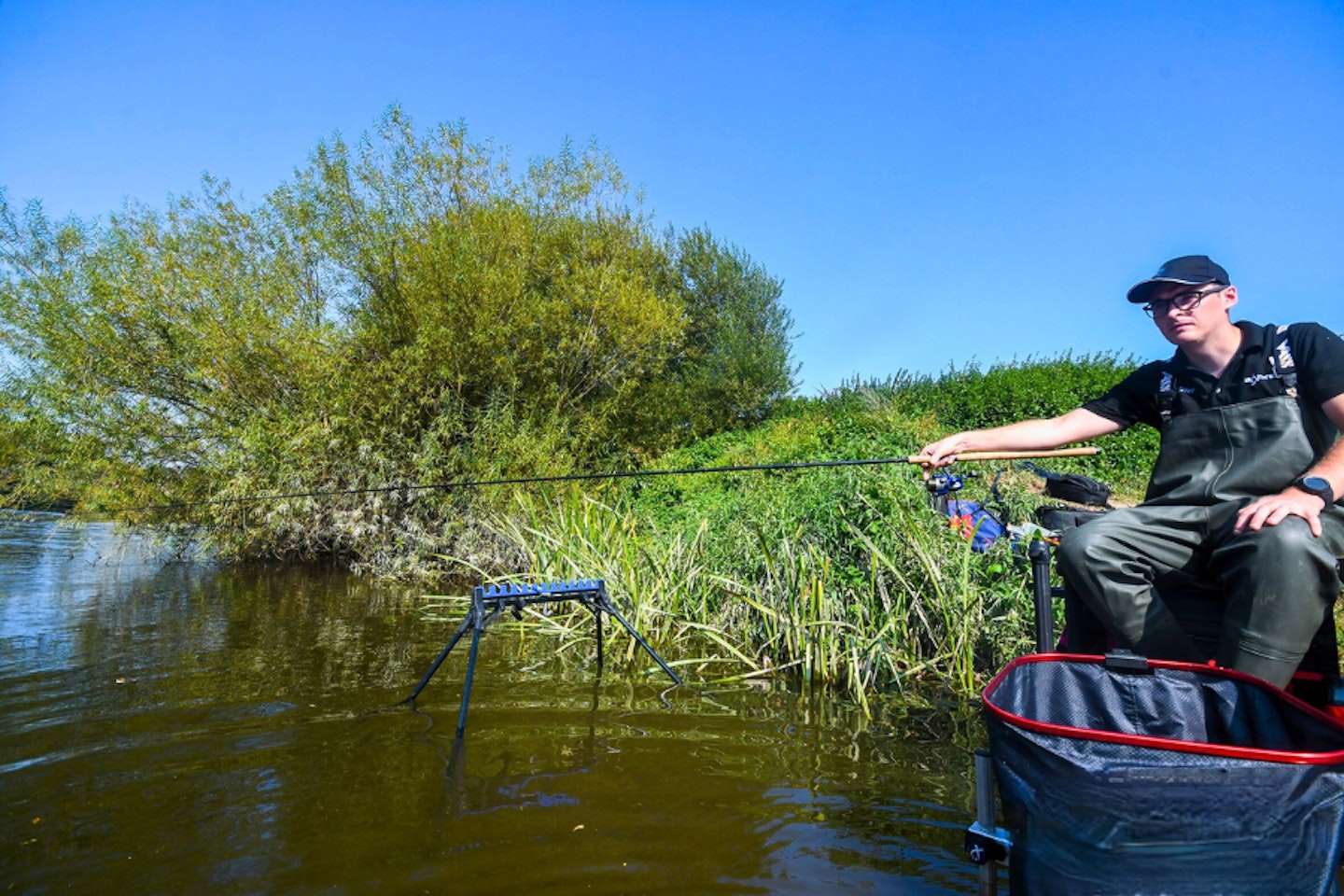
Adjust the pace of the rig
Big fish can wise up to the presence of a float quite quickly, but regularly switching how the hookbait trundles through the swim can help to allay any suspicion on their part.
At times I’ll allow the float to run at the pace of the current, while at others I will hold back a little to slow the hookbait down.
The type of float that you are using will have a big say in how successful you are at mastering both styles of presentation.
Two different patterns are required, and I’ve found that truncheon-style wagglers, with their thick tips, are perfect when fishing overdepth and dragging a little line along the bottom. If you are aiming to run it through at a quicker pace, a slimmer speci-style waggler is a better option.
HEAD TO ONE OF THESE GREAT STRETCHES OF WATER TO CATCH MORE FISH ON THE FLOAT...
